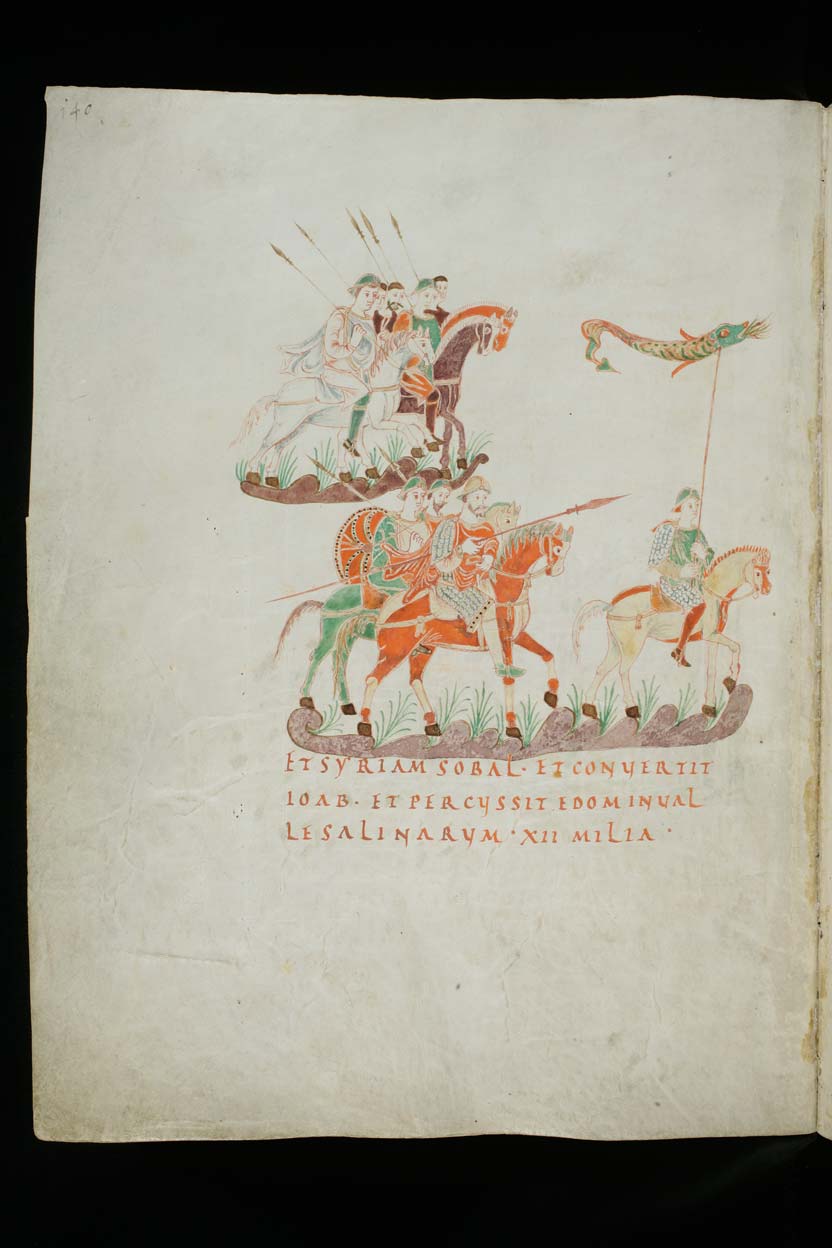Try Amazon Audible Premium Plus and Get Up to Two Free Audiobooks

Join Amazon Prime - Watch Thousands of Movies & TV Shows Anytime - Start Free Trial Now
Illustrations depicting 9th Century Carolingian Soldiers from
The Golden Psalter of St. Gallen
Stiftsbibliothek, Cod. Sang. 22
David fought against the Arameans from Naharaim and from Zobah
Illustration from Psalm 59 (60), page 140

A larger image of David fought against the Arameans from Naharaim and from Zobah, The Golden Psalter of St. GallenET SYRIAM SOBAL ET CONVERTIT IOAB ET PERCUSSIT EDOM IN VALLE SALINARUM XII MILIA
A psalm by David, for teaching, when he fought against the Arameans from Naharaim and from Zobah and Joab turned back and killed 12,000 Edomites in Salt Valley
p. 140 Fortsetzung des Titulus zu Ps 59 Et Syriam Sobal, et convertit Joab, et percussit Edom in valle salinarum XII milia unten an der Seite, darüber das zweizonige Bild mit dem Zug der Reiter Davids gegen die Syrer.
[A two-register picture with a unit of riders of David's array against the Syrians.]
Previous: The Golden Psalter of St. Gallen: David escapes Saul with Michal's aid Next: The Golden Psalter of St. Gallen: Joab slew 12,000 Edomites in Salt Valley
Back to the Golden Psalter of St. Gallen, Stiftsbibliothek, Cod. Sang. 22
CAROLINGIAN CAVALRY
Charlemagne’s army has been characterized throughout history by its cavalry.
Although always smaller in number than the infantry, the Carolingian cavalry dominated the battlefield.
This contemporary illustration, from the late ninth-century Golden Psalter held in the library of the Saint-Gall Monastery (Saint-Gallen-Stiftsbibliothek, MS 22),
Switzerland, is the best depiction of these soldiers and their arms and armor.
The men in the lower half of the illumination all wear the mail byrnie to protect their torso, upper arms, and thighs.
Their heads are protected by traditional Carolingian helmets, with their distinctive wide brim, unique in shape and style.
And they carry a long lance, its head shaped like the “Holy Lance,” except for the lead horseman who carries a banner in the shape of a fish or dragon,
which may be the unit’s symbol.
The cavalry pictured in the top half of the illumination wear helmets and carry lances similar to those of the lower warriors,
but they are not wearing byrnies, which may indicate that they are a light cavalry unit while their counterparts are heavy cavalry.
However, what is perhaps most important is the depiction of stirrups on all the saddles, a relatively new invention that cannot be seen more clearly than here.
Source: p.240, Medieval Weapons: An Illustrated History of Their Impact eds. Kelly DeVries & Robert D. Smith (2007)
A Carolingian draco standard of windsock design in Armies of the Dark Ages 600-1066 by Ian Heath, based on the Golden Psalter of St. Gallen


